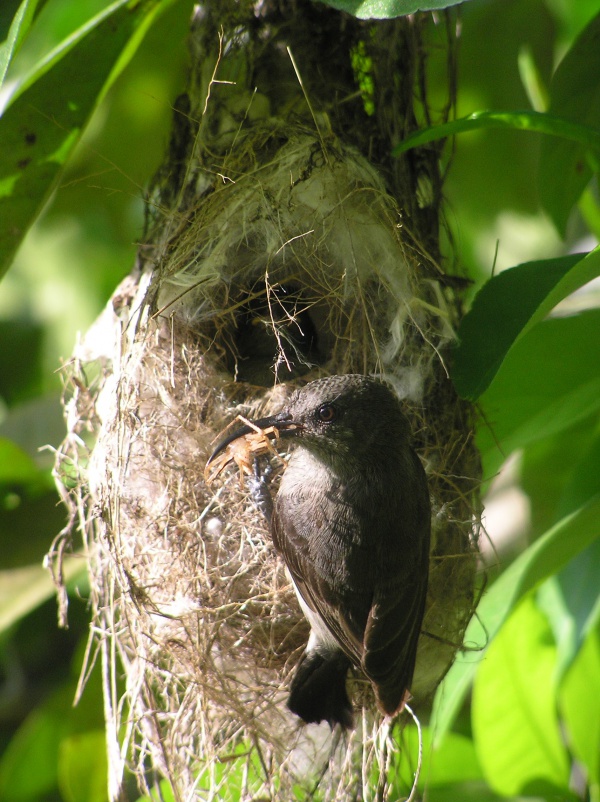Facts About Seychelles sunbird
The Seychelles sunbird, a delightful small bird endemic to the Seychelles, is named after the French explorer Jean-Jacques Dussumier. Locally, it is referred to as "kolibri" in Seychellois Creole. Some ornithologists classify it under the genus Cinnyris, while others prefer Nectarinia. Despite its limited geographic range, this bird is quite common, and its population remains stable, earning it a "least concern" status from the International Union for Conservation of Nature (IUCN).
Male Seychelles sunbirds measure about 11-12 centimeters in length. They display dull gray plumage complemented by a striking iridescent violet-green sheen on their heads and throats. Their underparts are brown, and they possess bright yellow or orange tufts under their wings. Females, in contrast, have more subdued coloring, with pale gray underparts and no yellow tufts. Both males and females produce a high-pitched, grating, and harsh song.
These sunbirds can be found on most of the larger granitic islands of the Seychelles Bank. They adapt well to environmental changes and inhabit diverse areas, including forests, gardens, scrublands, and mangroves, ranging from sea level up to 900 meters in altitude.
The Seychelles sunbird is an industrious forager, feeding on nectar and insects, and often visiting flowers such as hibiscus. Its flight is characterized by an undulating pattern.
Breeding occurs throughout the year, with a peak period around September and October. The female lays a single egg in a pear-shaped nest constructed from grass, moss, and spiderwebs. These nests are typically hung at the end of a twig to protect them from predators such as cats and rats.
